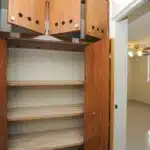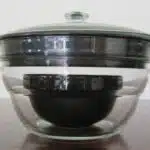As a closet organization expert, I have seen firsthand the frustration and stress that can come from a cluttered and disorganized closet. It can be overwhelming to know where to start when it comes to organizing your clothes, but with just a few simple steps, you can transform your closet into an organized and functional space.
In this article, I will share with you five easy steps for organizing your clothes in your closet. From decluttering and categorizing your clothing items to maximizing storage space, these tips will help you create a streamlined and stress-free wardrobe. By following these steps, you will not only save time and reduce stress in the mornings but also feel more confident and put-together in your daily life. So let’s get started!
Assessing Your Wardrobe Needs
When it comes to closet organization, the first step is to assess your wardrobe needs. This means taking a close look at the clothes you currently own and determining what you need in order to create outfits that make you feel confident and put-together. Start by taking everything out of your closet and laying it on your bed or floor. This will give you a clear view of what you have and make it easier to identify any gaps in your wardrobe.
Next, consider your lifestyle and the types of activities you participate in regularly. Are you someone who works in an office and needs a lot of professional attire? Do you enjoy outdoor activities or sports that require specific clothing? Taking these factors into account will help you determine which items are essential for your wardrobe. These essentials, often referred to as “wardrobe staples,” include pieces like a well-fitting blazer, a versatile dress, and comfortable shoes that can be dressed up or down.
Creating outfits is also an important factor to consider when assessing your wardrobe needs. Look for pieces that can be mixed and matched easily, such as neutral-colored tops and bottoms that can be paired together in multiple ways. Accessories like scarves, belts, and jewelry can also add variety to your outfits without taking up too much space in your closet. By carefully evaluating your current wardrobe and identifying areas where it could use improvement, you’ll be well on your way to creating a more functional and stylish closet space.
With a clear understanding of what items are essential for your lifestyle and how they can be combined into stylish outfits, the next step is setting goals for organizing your closet.
Setting Goals For Your Closet Organization
Assessing your wardrobe needs is just the first step towards achieving a well-organized closet. The next important stage is to set goals that will guide you in the organization process. Creating accountability for yourself will help you stay on track and motivated throughout the journey.
To create accountability, start by writing down your goals and displaying them somewhere visible within your closet. This way, you are constantly reminded of what you want to achieve, and it becomes easier to make progress towards those goals. Additionally, identify obstacles that may hinder you from achieving your goals and come up with strategies to overcome them.
One common obstacle is cluttered clothing items. Decluttering is an essential step in organizing your closet as it helps to create more space and reduce confusion when selecting outfits. In the subsequent section, we will explore practical tips for decluttering your clothing items and creating a functional and visually appealing closet space.
Decluttering Your Clothing Items
- First, it is important to sort clothing items by type, setting aside items such as tops, bottoms, dresses, and shoes.
- Once the items are sorted, it is necessary to prioritize clothing needs. Consider seasons, occasions, and frequency of wear for each item.
- Once the items are prioritized, it is helpful to store items in categories such as seldom-worn items, casual items, and dressy items.
- Finally, it is important to store away any items that are out of season or are no longer needed to make the most of the closet space.
Sorting Clothing Items
When it comes to decluttering your clothing items, sorting them is the first step towards a well-organized closet. Sorting can be done by color or by type, but the question remains: which method is best for your closet organization?
If you opt to sort your clothes by type, you’ll start by separating them into categories such as shirts, pants, skirts, dresses, and so on. This method can be helpful if you have a lot of different types of clothing items in your closet. However, it can also make it difficult to find specific items since they are not grouped together based on their colors.
On the other hand, if you choose to sort your clothes by color, you’ll group all your reds together, blues together, greens together and so on. This method allows for quick visual recognition of where a particular item is located in the closet. Plus it helps create an aesthetically pleasing appearance in the closet. It’s an ideal method if you’re someone who likes to follow a particular dress code or wants to coordinate their outfits easily.
Sorting clothes may seem like a daunting task at first but with these two methods – sorting by type or sorting by color – you can quickly organize your clothing items and create an easy-to-navigate system in your closet. Choose the one that works best for you and watch how much easier it becomes to find what you need when getting ready each day!
Prioritizing Clothing Needs
When it comes to decluttering your closet, sorting your clothes is just the first step. Once you’ve sorted them by type or color, it’s time to take a minimalist approach and prioritize your clothing needs. This means deciding which items are essential to keep and which ones can be donated or sold.
To prioritize your clothing needs, start by considering what you wear most often and what fits well. These items should be kept in your closet, while those that don’t fit properly or haven’t been worn in a long time can be discarded. It’s also important to consider sustainability options when decluttering. Instead of throwing away unwanted clothing, consider donating them to a charity or selling them online.
In addition to prioritizing your current clothing needs, it’s also important to think about future needs. If you have upcoming events or changes in lifestyle (such as starting a new job), make sure you have appropriate clothing for these occasions. By taking a thoughtful and intentional approach to decluttering and organizing your closet, you’ll be able to create a space that serves your needs while also being sustainable and clutter-free.
Categorizing Your Clothes
Categorizing your clothes is the next step in organizing your closet. After decluttering and donating unwanted items, it’s time to sort through what’s left and group them accordingly. Here are some tips to help you categorize your clothes effectively:
Sort by occasion: Start by separating your clothes into categories based on the occasion or purpose they serve. For example, separate work clothes from casual wear, gym clothes from loungewear, and formal wear from everyday attire. This will make it easier for you to find what you need when you’re getting ready.
Group by color: Once you’ve sorted your clothes by occasion, it’s time to group them by color. This will not only make your closet look more visually appealing but also help you find what you’re looking for quickly. Arrange your clothes in a rainbow pattern or by shades of light to dark.
Create subcategories: Depending on the size of your wardrobe, you may want to further categorize your clothes into subcategories such as tops, bottoms, dresses, and outerwear. This will help streamline the process of finding what you need and ensure that everything has a designated place in your closet.
By categorizing your clothes in this manner, you’ll be able to create an organized closet that’s easy to navigate and maintain. However, before putting everything away, it’s important to choose the right storage solutions that will maximize space and keep things tidy.
Choosing The Right Storage Solutions
Did you know that the average American spends 30 minutes a day looking for something to wear? That’s a whopping 182.5 hours a year! One way to save time and reduce stress is by choosing the right storage solutions for your closet. By doing so, you’ll be able to easily find what you’re looking for without having to sift through piles of clothes.
Choosing materials is an important aspect of closet organization. Opting for high-quality materials like wood and metal can ensure that your storage solutions will last longer and provide better support for your clothes. Additionally, customizing layout can help maximize space and make it easier to access your items. For example, adding shelves or drawers can give you more surface area to store folded clothes or accessories.
Incorporating storage solutions into your closet can not only save time but also create a sense of calm and order in your daily routine. Choosing materials and customizing layouts are two key factors in making this happen. In the next section, we’ll discuss how to take advantage of every inch of space in your closet with tips on maximizing closet space.
Maximizing Closet Space
Now that you have chosen the right storage solutions for your closet, it’s time to focus on maximizing the available space. The first thing you need to consider is the closet layout. It’s important to understand the dimensions of your closet and work with them instead of against them. This means taking into account the height, width, and depth of your shelves, rods, and drawers. By doing so, you can create a functional and efficient system that makes the most out of your space.
Once you have a clear understanding of your closet layout, it’s time to get creative with storage ideas. One great option is to use hanging organizers such as shoe racks or sweater hangers. These can help free up space on shelves and make it easier to find what you’re looking for. Another idea is to use drawer dividers or small baskets to keep smaller items like socks or scarves organized.
Remember that there are no hard and fast rules when it comes to organizing your closet. What works for one person may not work for another. The key is to experiment with different storage solutions until you find what works best for you. With some creativity and a little bit of effort, you can transform your cluttered closet into an organized oasis.
As we move forward in our quest for a perfectly organized closet, let’s shift our focus toward folding and hanging techniques. By mastering these skills, we can ensure that our clothes are stored properly and will last longer. So let’s dive into some tips and tricks for keeping our clothes looking their best!
Folding And Hanging Techniques
When it comes to organizing clothes in your closet, proper folding and hanging techniques are crucial. Not only do they help maximize space, but they also keep your clothes wrinkle-free and easy to find. One popular folding method is the KonMari method, developed by organizing consultant Marie Kondo. This technique involves folding clothes into small rectangles and standing them upright in drawers or on shelves.
To properly fold with the KonMari method, start by laying the garment flat on a surface. Fold one side of the garment towards the center, then repeat with the other side so that both sides meet in the middle. Fold the sleeves back so that they line up with the edge of the garment, then fold in half again from top to bottom. The resulting rectangle should be small enough to stand upright on its own when placed in a drawer or on a shelf.
For hanging clothes, use hangers that are appropriate for each type of garment – padded hangers for delicate fabrics like silk, wooden hangers for heavy items like coats and jackets. Hang similar items together (e.g. all blouses together) and group them by color within each category. To save space, consider using cascading hangers or adding a second rod to hang clothes vertically.
Transition: Now that you’ve mastered the art of folding and hanging your clothes efficiently, it’s time to move onto storing seasonal clothing.
Storing Seasonal Clothing
After mastering the art of folding and hanging techniques, the next step in organizing your closet is storing seasonal clothing. This process involves identifying which items are no longer suitable for the current season and putting them away until they’re needed again. Off season rotation is key to maintaining a clutter-free closet throughout the year.
To start, go through each item in your closet and determine if it’s appropriate for the current season. If it’s not, set it aside for storage. When packing away out-of-season clothes, consider using vacuum sealed bags which can save space and protect your clothing from dust and moisture. These bags come in various sizes and can be found at most home goods stores.
Once you have all of your off-season clothes packed away, make sure to label each bag with its contents to make it easier to find what you need when the time comes to rotate your wardrobe. Store these bags in a separate area of your home or apartment, such as under the bed or in a spare closet. By following this simple process of off-season rotation and utilizing vacuum sealed bags, you’ll be able to maintain an organized closet year-round.
Transitioning into maintaining an organized closet, it’s important to remember that organization is an ongoing process rather than a one-time event. In order to keep your newly organized closet clean and clutter-free, it’s essential to routinely check for items that no longer serve you or are out of season. By doing so, you can continue to optimize your space and keep things tidy without feeling overwhelmed by unnecessary clutter.
Maintaining Your Organized Closet
How do you keep your closet tidy over time? Maintaining an organized closet takes effort, but it’s worth it. You’ll save time getting ready in the morning and feel more put-together throughout the day. Here are some tips for keeping your closet organized:
First, make sure everything has a place. If every item of clothing has a designated spot, you’ll be less likely to toss something on the floor or shove it onto a shelf. Use hangers, shelves, and drawers to create clear sections for different types of clothing. Consider investing in storage solutions like shoe racks or hanging organizers if you’re short on space.
Second, assess regularly what you have and what you need. Every few months, take stock of your clothes and accessories to see what’s working and what’s not. Donate items that no longer fit or suit your style, and make a list of any gaps in your wardrobe that need filling. This will prevent clutter from building up over time.
Finally, get into the habit of tidying up regularly. Spend five minutes at the end of each day putting away any clothes that are out of place or picking up items from the floor. This simple routine will help keep your closet organized without taking up too much time.
As you maintain an organized closet, consider how you can streamline your wardrobe even further by creating a capsule wardrobe. With this method, you choose a limited number of versatile pieces that can be mixed and matched to create many different outfits. It’s an effective way to simplify your life while still looking stylish!
Creating A Capsule Wardrobe
Maintaining an organized closet can make getting dressed in the morning a breeze, but sometimes it can be overwhelming to have too many options. That’s where creating a capsule wardrobe comes in handy. A capsule wardrobe is a collection of versatile, high-quality clothing items that can be mixed and matched to create multiple outfits. The benefits of having a capsule wardrobe include saving time and money, reducing decision fatigue, and minimizing clutter.
Building a capsule wardrobe can seem like a daunting task, but it doesn’t have to break the bank. Start by assessing your current closet and identifying pieces that you wear frequently and that fit well. Consider the colors and styles that suit you best and try to choose items that coordinate with each other. Keep in mind that quality over quantity is key when it comes to building a capsule wardrobe.
One of the challenges of creating a capsule wardrobe is letting go of clothes that no longer serve you. However, this step is essential to minimize clutter and ensure that your new wardrobe only includes items that you love and wear regularly. Donating or selling unwanted items not only clears space in your closet but also allows others to benefit from clothing they may not otherwise be able to afford. With some careful planning and consideration, building a capsule wardrobe on a budget can be both rewarding and sustainable for your lifestyle.
Donating Or Selling Unwanted Items
- Sorting clothes is an essential step in deciding what items to donate, sell, or keep.
- Start by removing all items from the closet and deciding which items you still wear and which items you no longer need.
- Group the items that are no longer needed into categories, such as items to donate, items to sell, and items to keep.
- Donate items in good condition to local charities or organizations in need of the items.
- Sell items in good condition online, through a consignment shop, or in a local yard sale.
- Lastly, store items that you want to keep in a neat and organized manner in the closet.
Sorting Clothes
In order to effectively organize your closet, it is important to start with sorting your clothes. This involves going through every item of clothing and deciding whether it should be kept, donated, or sold. A helpful tip when sorting clothes is to use color coding and closet dividers. By grouping similar colors together and separating them with dividers, you can easily see what you have and make decisions about what to keep or get rid of.
Color coding is a simple yet effective way to sort your clothes. By grouping similar colors together, you can quickly identify items that may not fit in with the rest of your wardrobe. For example, if you have a lot of neutral colors like black, white, and gray, but also have a bright pink blouse that stands out, this may be a sign that it doesn’t belong in your wardrobe anymore. Closet dividers can also help with this process by physically separating different color groups.
In addition to color coding and closet dividers, there are other ways to sort clothes such as by season or occasion. Whatever method you choose, the key is to be thorough and make intentional decisions about each item. Remember that donating or selling unwanted items can serve others who may benefit from them more than you do. By taking the time to sort through your clothes and letting go of what no longer serves you, you can create a more organized and purposeful closet for yourself while also giving back to those in need.
Donating Items
Once you have sorted through your clothes and decided what to keep and what to get rid of, it’s time to think about donating or selling unwanted items. While selling items may bring in some extra cash, donating can serve a greater purpose. One of the benefits of donating is that it allows you to give back to those in need. Your unwanted clothes can be given to individuals or families who may not have the means to purchase new clothing. This act of kindness can help boost their confidence and make them feel valued.
Finding donation centers is easy as there are many organizations that accept gently used clothing donations. Some popular donation centers include Goodwill, The Salvation Army, and local charities. These organizations typically have drop-off locations where you can leave your donations or they may even offer pick-up services for larger items like furniture or appliances. By donating your unwanted items, you are not only helping others but also reducing waste and promoting sustainability.
Donating items is a simple yet meaningful way to serve others while also decluttering your closet. It’s important to remember that the items you no longer need or want may be exactly what someone else needs in order to thrive. By taking the time to donate these items instead of throwing them away, you can make a positive impact on someone’s life and contribute towards a more sustainable future for all.
Selling Items
Now that you have sorted through your clothes and decided what to keep and what to get rid of, it’s time to think about donating or selling unwanted items. While donating can serve a greater purpose of giving back to those in need, selling items may bring in some extra cash. If you choose to sell your items, setting prices can be tricky but there are several options available. You can host a garage sale, utilize online marketplaces such as eBay or Craigslist, or even sell items on social media platforms like Facebook Marketplace. Finding buyers may take some effort but with the right approach, you can turn your unwanted items into cash.
However, when deciding between selling or donating your unwanted clothing, it’s important to consider the impact of your actions. Selling items may provide financial benefits for yourself but donating can benefit others who may not have the means to purchase new clothing. By taking the time to donate your clothes instead of throwing them away or selling them for a profit, you can make a positive impact on someone else’s life while also promoting sustainability.
It’s worth noting that if you do decide to sell your unwanted clothing, it’s crucial to ensure that they are still in good condition and usable by others. Items that are too worn out or damaged should be recycled or donated instead. No matter which option you choose – donating or selling – remember that by decluttering your closet and letting go of what no longer serves you, you are opening up space for new opportunities and experiences in your life while also potentially serving others.
Incorporating Accessories And Shoes
Accessories and shoes are the finishing touches to any outfit, and they deserve just as much attention when organizing your closet. Creative displays can elevate your accessories from cluttered mess to chic statement pieces. Consider incorporating a jewelry stand or dish for easy access to your favorite pieces, or install hooks or hangers on the inside of your closet door for scarves, belts, and hats.
When it comes to shoes, storage solutions are key. A shoe rack or cubby system can keep your footwear organized and prevent them from getting damaged. If you have limited space, consider using an over-the-door organizer or under-bed storage containers. To make finding the right pair quick and easy, store your shoes with one shoe facing forward and one facing backward.
Incorporating accessories and shoes into your closet organization plan can feel overwhelming at first, but with a little creativity and planning, it can transform your space into a stylish haven. Remember to take inventory of what you have before investing in any new storage solutions, and always consider functionality and accessibility when selecting displays and organizers. Now that you’ve conquered organizing these elements of your wardrobe, let’s move on to color coordinating your closet for a cohesive look.
Color Coordinating Your Closet
When it comes to organizing your closet, color coordinating is an essential step. Grouping your clothes by color palette not only makes it easier for you to find the items you’re looking for but also creates a visually pleasing display in your closet. Start by separating your clothing into categories, such as tops, bottoms, dresses, and outerwear. Then organize each category by color, from lightest to darkest.
It’s important to consider the lighting in your closet when color coordinating. If your closet doesn’t have sufficient lighting, it can be challenging to differentiate between similar shades of colors like navy and black or dark green and brown. To avoid this problem, try installing additional lighting fixtures or using battery-operated lights in your closet. This will make it easier for you to see the true colors of each article of clothing and ensure that they are properly organized.
By color coordinating your closet, you’ll not only save time getting dressed but also create a visually appealing space. The next time you walk into your closet, imagine seeing a rainbow of colors instead of a chaotic mess of clothing. By following these simple steps and taking the time to organize properly, you’ll be well on your way to creating a functional and beautiful wardrobe display that reflects your personal style.
Personalizing Your Space
- One way to start organizing your closet is to separate your items by color, creating an orderly and visually pleasing appearance.
- Once your items are grouped by color, you can designate sections in your closet for specific categories, such as workwear, casual clothing, and formal attire.
- To further customize your storage, consider investing in closet organizers that will help you to maximize the use of your space and also keep items organized and accessible.
- You can also use shelves and wall-mounted racks to display accessories such as hats and scarves, making them easier to reach and adding a decorative element to your closet.
- If your closet has a small area, consider using vertical space to maximize its storage potential by adding extra hanging rods or shelves.
- Finally, consider using hooks or a valet rod to hang items such as purses or belts, which will further help you to keep your closet organized and aesthetically pleasing.
Organizing By Color
As a closet organization expert, I highly recommend organizing your clothes by color. Not only does it create a visually pleasing aesthetic in your closet, but it also makes it easier to find and match outfits. When you’re in a rush to get ready for the day, being able to quickly spot a particular shirt or skirt can save you valuable time.
Color psychology in fashion is also worth considering when organizing your closet. Certain colors can evoke different emotions and moods, which can impact how you feel throughout the day. For example, wearing blue can create a calming effect while red can increase energy and confidence. By organizing your clothes by color and incorporating different hues into your outfit choices, you can intentionally choose colors that align with your mood and goals for the day.
When personalizing your space through closet organization, keep in mind that matching outfits isn’t always about perfectly coordinating colors. It’s also about finding pieces that complement each other in terms of style and silhouette. By keeping similar items together based on color and style, you’ll have an easier time creating cohesive outfits that make you feel confident and put-together. With these tips in mind, organizing by color can be an effective way to create a functional and aesthetically pleasing closet space that fits your unique style and needs.
Designating Sections
When it comes to personalizing your closet space, color coding is just one aspect of the process. Another effective way to organize your clothes is by designating sections based on a clothing hierarchy. This involves separating items into categories such as casual wear, work attire, formal wear, and special occasion pieces. By doing so, you’ll be able to quickly identify the appropriate outfit for any given occasion.
In addition to separating clothes based on their intended use, it can also be helpful to create designated sections for specific types of clothing. For example, you might have a section for dresses and skirts, another for pants and shorts, and yet another for tops and blouses. By having a designated place for each type of clothing item, you’ll know exactly where to find what you need when getting dressed in the morning.
When designating sections in your closet, it’s important to consider both function and aesthetics. While creating an organized system will make it easier to find what you’re looking for, it should also look visually appealing. Utilize storage solutions such as shelves, drawers, and hanging rods to maximize space while keeping items easily accessible. With intentional planning and organization, your closet can become a functional yet stylish space that reflects your unique personality and style preferences.
Customizing Storage
As a closet organization expert, I highly recommend customizing your storage solutions to personalize your space. DIY shelving is an excellent way to maximize the use of your closet’s vertical space while keeping everything organized and accessible. You can customize the shelving based on the size of your closet and the types of clothing items you have. Adding closet lighting can also be beneficial in making it easier to find what you’re looking for.
When designing your custom storage solutions, it’s important to consider both form and function. Your storage solutions should not only make it easier to locate items but also look visually appealing. For example, using matching hangers can give your closet a cohesive look while keeping clothes neatly hung. Utilizing drawer dividers or baskets can help keep smaller items like socks or accessories contained and easy to find.
Ultimately, customizing your storage solutions will create a more efficient and personalized space that reflects your unique style preferences. With intentional planning and design, you’ll have a functional yet stylish closet that meets all of your needs. Whether you’re just starting out or looking to revamp an existing space, incorporating these tips will help you achieve the organized closet of your dreams.
Troubleshooting Common Organization Issues
Did you know that the average person spends about 10 minutes every morning trying to find something to wear? That adds up to a whopping 60 hours a year! One way to avoid this frustration and save time is by maximizing efficiency in your closet organization. Here are some creative solutions for common organization issues:
Not Enough Space: If you have limited space, consider using slim hangers or cascading hooks to hang multiple items on one hanger. Utilize the back of your closet door for extra storage with over-the-door organizers or hooks. You can also use shelf dividers or hanging organizers to create more vertical storage.
Shoes Everywhere: Keep shoes off the floor by using shoe racks, cubbies, or hanging organizers that attach to your closet rod. For those with limited space, try storing shoes under your bed in a designated container.
Mixed Up Accessories: Avoid tangled jewelry and misplaced belts by using drawer dividers, hanging organizers, or hooks specifically designed for accessories. Keep scarves wrinkle-free by hanging them on a scarf hanger.
With these tips, you can say goodbye to chaotic mornings and hello to stress-free outfit selection. Maximizing efficiency in your closet organization not only saves time but also helps alleviate unnecessary stress from your daily routine- leaving more room for self-care and relaxation without compromising style or function. Try incorporating these creative solutions into your routine today!
Conclusion
Organizing your closet may seem like a daunting task, but with the right approach, it can be an enjoyable and rewarding experience. By following the five easy steps outlined in this article, you can transform your cluttered wardrobe into a well-organized and functional space.
Assessing your wardrobe needs is the first step towards effective closet organization. Set goals for your closet organization by decluttering your clothing items and categorizing them based on their type and frequency of use. Choosing the right storage solutions is crucial to ensure that everything has its place, making it easier for you to locate items quickly.
Incorporating accessories and shoes into your closet organization plan can help to further streamline your wardrobe. Color coding your closet adds a touch of elegance and makes finding specific items easier. Personalizing the space with decorative touches such as scented candles or potted plants can make getting dressed each day feel like an indulgent ritual.
When troubleshooting common organization issues, remember that maintenance is key. Regularly decluttering clothes that no longer fit or are out of style will keep your closet organized in the long run. With these easy steps, you can achieve a well-organized closet that not only looks great but makes getting dressed in the morning effortless. So go ahead, embrace the symbolism of a clean slate and start organizing!
Image Credits
- “organized-clothes yasmin” by nist6ss (featured)


























![How To Wash And Care For White Clothes 26 The only genuine borax soap cleanses hygienically saves the clothes and hands. 20 Mule-Team brand Boraxo white laundry soap [front]](https://green-life.blog/wp-content/uploads/2023/05/YDXLLCovnOjq-150x150.jpg.webp)


